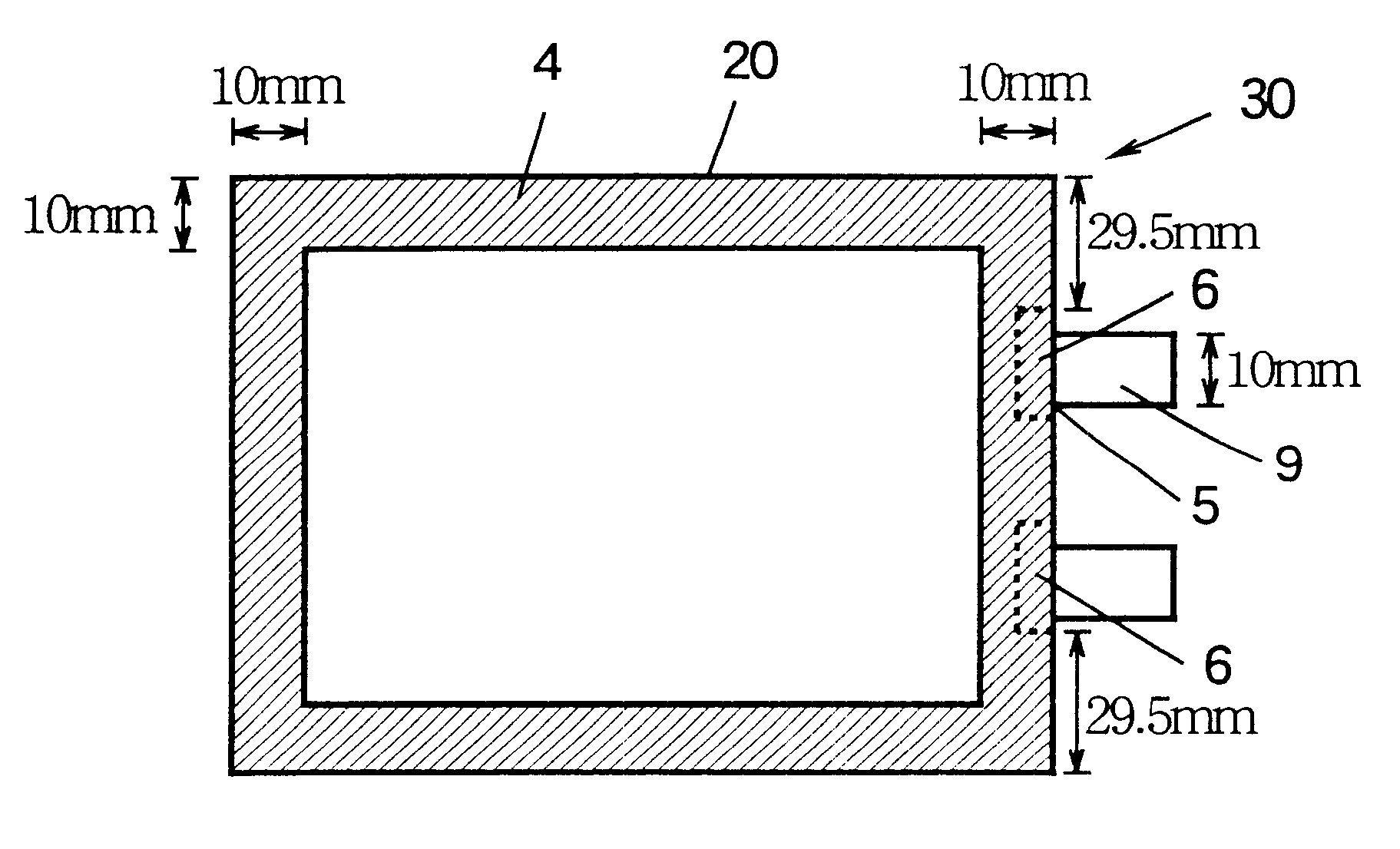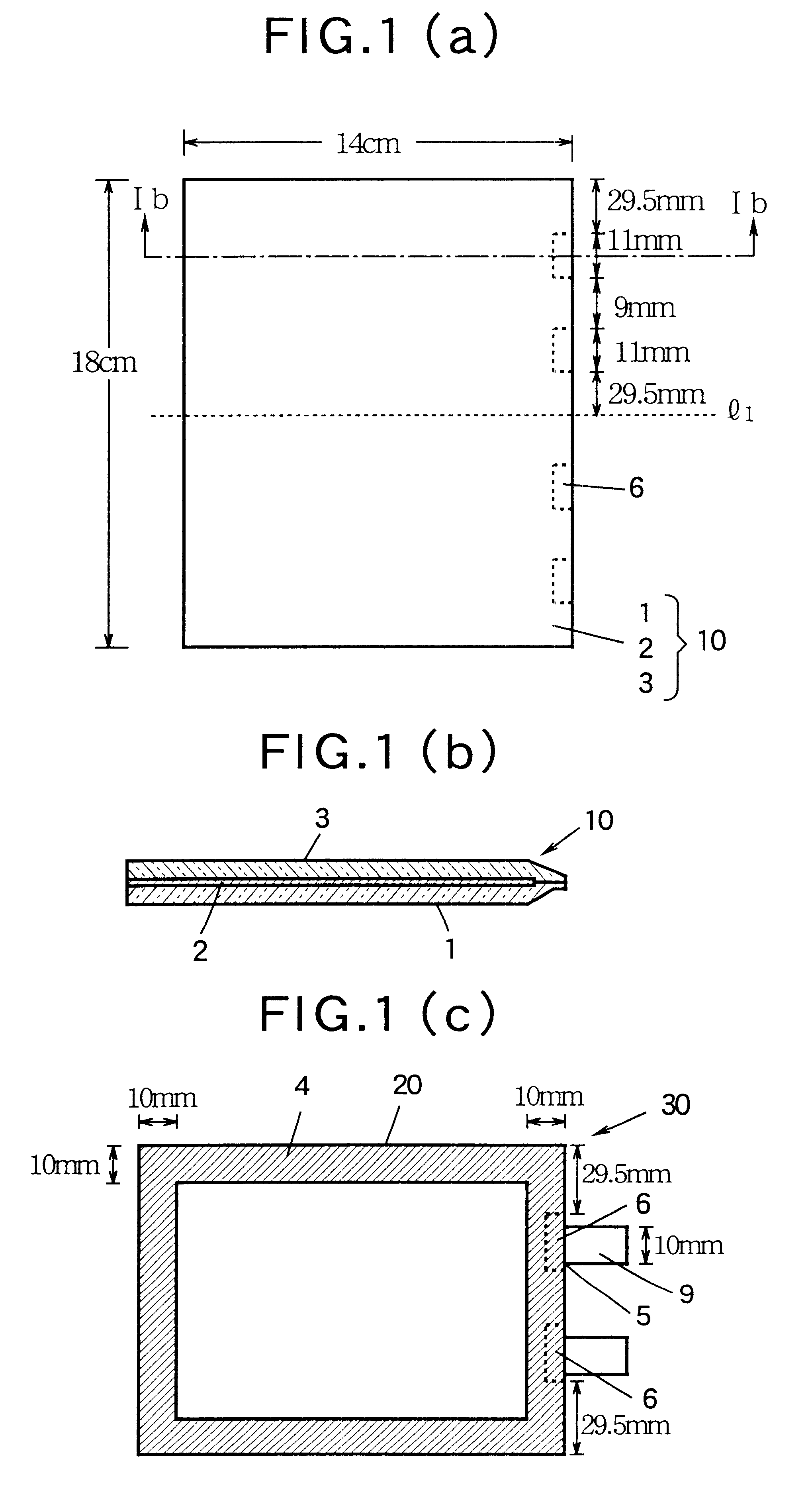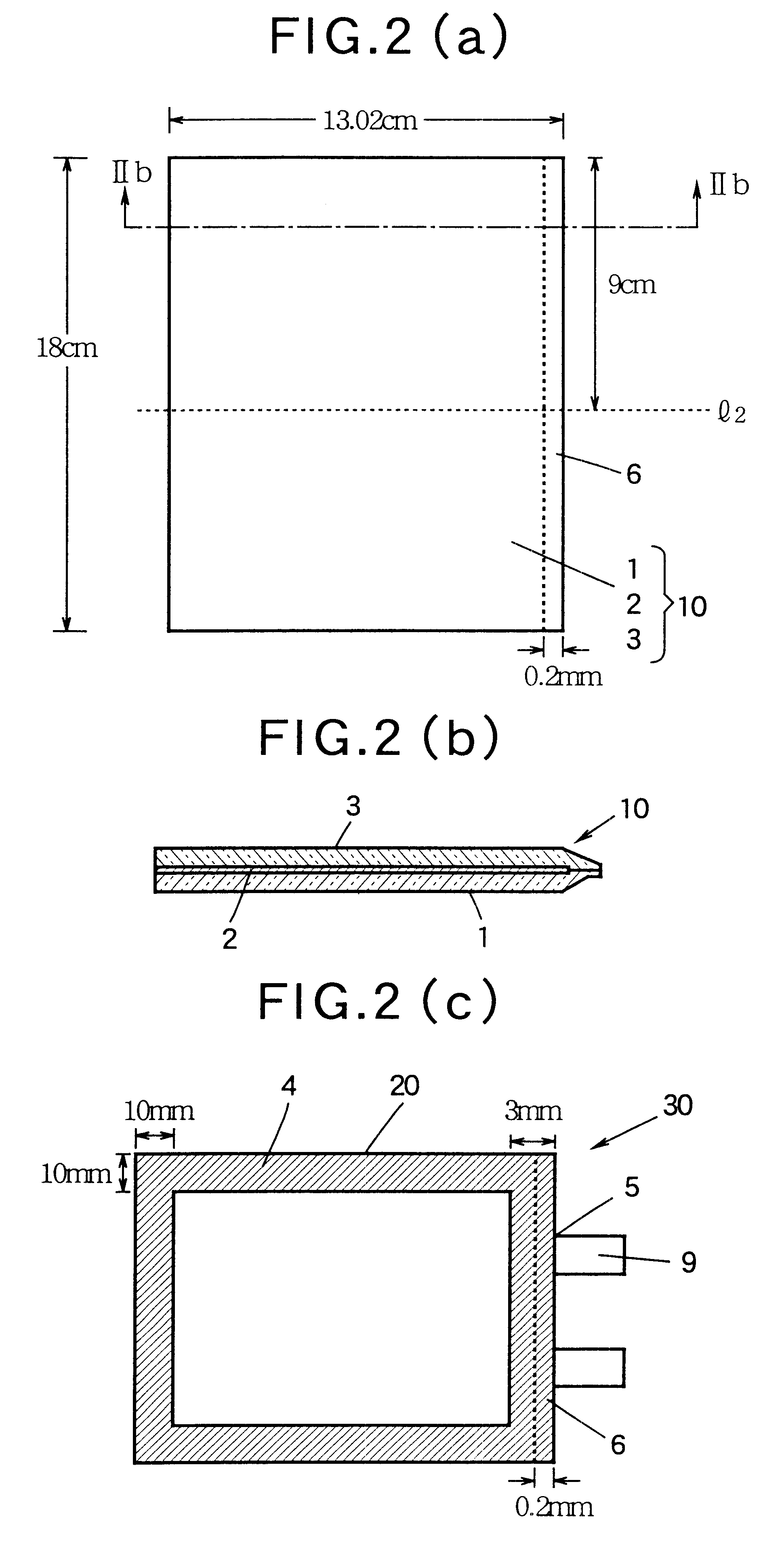Non-aqueous battery of a thin configuration
a thin configuration, non-aqueous technology, applied in the direction of secondary cells, jackets/case materials, cell components, etc., can solve the problems of difficult to reduce the weight of such a battery having a metallic casing, limited freedom of design of metallic casing shapes, and frequent short-circuit between terminals
- Summary
- Abstract
- Description
- Claims
- Application Information
AI Technical Summary
Problems solved by technology
Method used
Image
Examples
example 1
A powder of lithium cobalt oxide (LiCoO.sub.2 ; average particle diameter: 10 .mu.m) and carbon black were added to and dispersed in a 5% by weight solution of polyvinylidene fluoride (as a binder) in N-methylpyrrolidone (NMP), so that a mixture containing solid components in the following dry weight ratio was obtained: LiCoO.sub.2 (85%), carbon black (8%) and polyvinylidene fluoride (7%). The obtained mixture was applied onto an aluminum sheet (thickness: 15 .mu.m) (as a current collector) and dried, followed by heat-pressing, to thereby prepare a positive electrode layer having a thickness of 115 .mu.m and a density of 2.8 g / cm.sup.3. The aluminum sheet having the prepared positive electrode layer thereon was used as a positive electrode sheet. A powder of needle coke (NC) having an average particle diameter of 12 .mu.m was homogeneously mixed with a 5% by weight solution of polyvinylidene fluoride in NMP, thereby obtaining a slurry (NC / polymer dry weight ratio=92:8). The obtained...
example 2
A laminate shown in FIGS. 2(a) and 2(b) for producing a pouchy casing for a battery was prepared in the following manner. Three different sheets respectively of a polyethylene terephthalate film (trade name: Melinex S, manufactured and sold by ICI Japan Ltd., Japan) having a length of 18 cm, a width of 14 cm and a thickness of 12 .mu.m; an aluminum foil having a length of 18 cm, a width of 13 cm and a thickness of 9 .mu.m; and an L-LDPE film (trade name: LS-700C, manufactured and sold by Idemitsu Petrochemical Co., Ltd., Japan) having a length of 18 cm, a width of 14 cm and a thickness of 50 .mu.m, were put one upon another in this order, wherein the sheets were trued up on their respective one 18 cm-sides. The sheets were adhered using a two-pack urethane adhesive to obtain a laminate. The aluminum foil in the laminate was cut-out along the entire length of one 18 cm-side of the foil by a depth (in a direction perpendicular to the peripheral edge of the foil) of 10 mm as measured f...
example 3
A laminate shown in FIGS. 3(a) and 3(b) for producing a pouchy casing for a battery was prepared in the following manner. Three different sheets respectively of a polyethylene terephthalate film (trade name: Melinex S, manufactured and sold by ICI Japan Ltd., Japan) having a length of 18.9 cm, a width of 14 cm and a thickness of 12 .mu.m; an aluminum foil having a length of 17.9 cm, a width of 13 cm and a thickness of 20 .mu.m; and a polyethylene-vinyl alcohol copolymer film (trade name: EF-HS, manufactured and sold by Kuraray Co., Ltd., Japan) having a length of 18.9 cm, a width of 14 cm and a thickness of 30 .mu.m, were put one upon another in this order, wherein the respective centers of the three sheets were in register with one another in which the sheets were adhered using a two-pack urethane adhesive to obtain a laminate. The thermoplastic resin layer and the electrically insulating material layer (polyethylene terephthalate film layer and polyethylene-vinyl alcohol copolymer...
PUM
 Login to View More
Login to View More Abstract
Description
Claims
Application Information
 Login to View More
Login to View More - R&D
- Intellectual Property
- Life Sciences
- Materials
- Tech Scout
- Unparalleled Data Quality
- Higher Quality Content
- 60% Fewer Hallucinations
Browse by: Latest US Patents, China's latest patents, Technical Efficacy Thesaurus, Application Domain, Technology Topic, Popular Technical Reports.
© 2025 PatSnap. All rights reserved.Legal|Privacy policy|Modern Slavery Act Transparency Statement|Sitemap|About US| Contact US: help@patsnap.com



